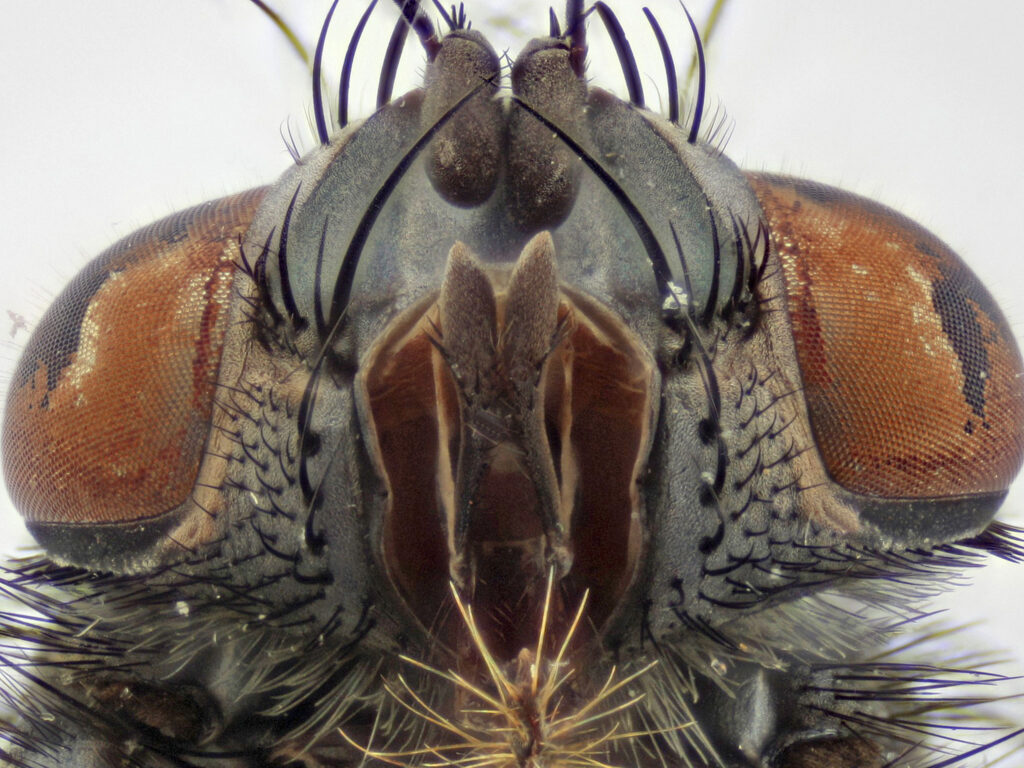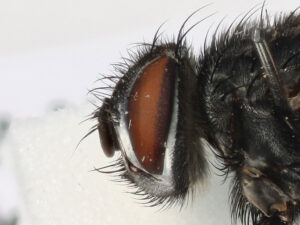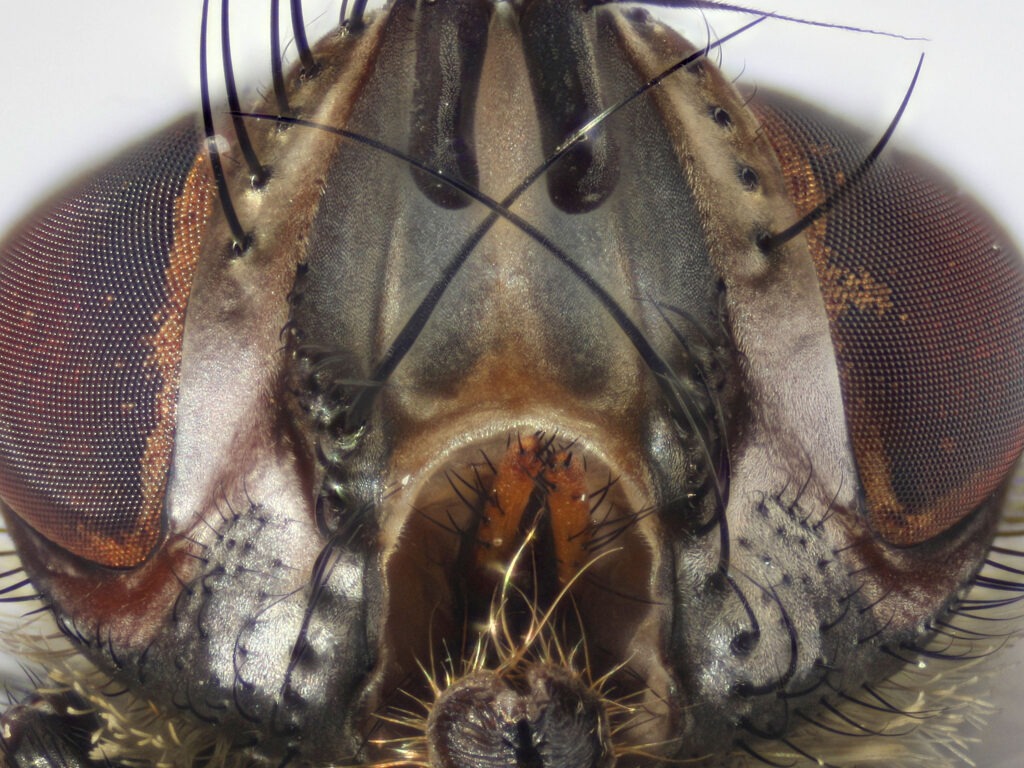One of the most awkward questions that you are asked is to judge whether (when viewed laterally) the mouth edge is projecting beyond the base of the vibrissae or not. If you hold the specimen badly then you can make just about anything look projecting but sometimes even if you do everything correctly you can be left feeling unconvinced. First of all remember that in most of the places where it is asked in the keys the word “obviously” is used, which should be a clue because if you aren’t sure then your fly probably isn’t one with a projecting mouth edge. But for those times when it’s a bit 50/50 just read on and we’ll go through all of the options. Species with a very obviously projecting mouth edge – Linnaemya, the Eurithia group, Eriothrix and Aphria. These all have a huge “top lip” or “over bite” and they shouldn’t be a problem at all. Here is an example of a Linnaemya vulpina (with a protruding mouth edge) and a Sturmia (without):
Then there are the oddities, such as Cadurciella tritaeniata, which is supposed to have a protruding mouth edge but … well, you judge for yourself:
Not very convincing is it? The key is to hold your specimen correctly to start with so that you are looking at it square on, laterally – imagine in your mind’s eye orienting it so that the base of the back vibrissae is behind the base of the front vibrissae. If that doesn’t work then try an old trick that I picked up a few years ago – turn your specimen so that you are looking at it from under the head – looking up – and you will see both vibrissae clearly and see the curve of the mouth edge. Now does it look like it projects beyond the base of the vibrissae?
 Cadurciella tritaeniata mouth seen from below showing that the mouth edge DOES project beyond the bases of the vibrissae.
Cadurciella tritaeniata mouth seen from below showing that the mouth edge DOES project beyond the bases of the vibrissae.
Exorista rustica mouth seen from below, showing that the mouth edge does NOT project beyond the bases of the vibrissae
When working with material that has come out of alcohol do remember that the drying process can sometimes distort the shape of the head. It is not uncommon for the face to shrink a bit and buckle, causing a crease to develop in the face and for the mouth edge to appear projecting when it isn't ... use careful judgment in these cases.




